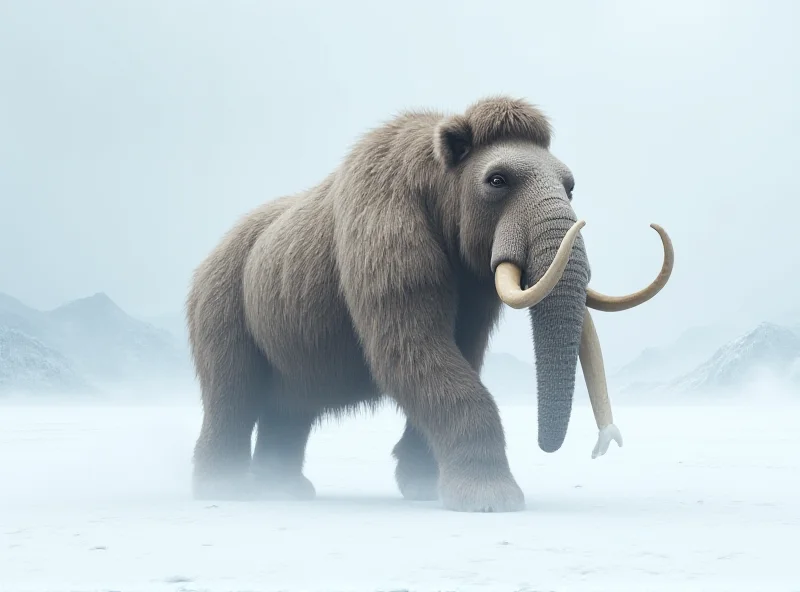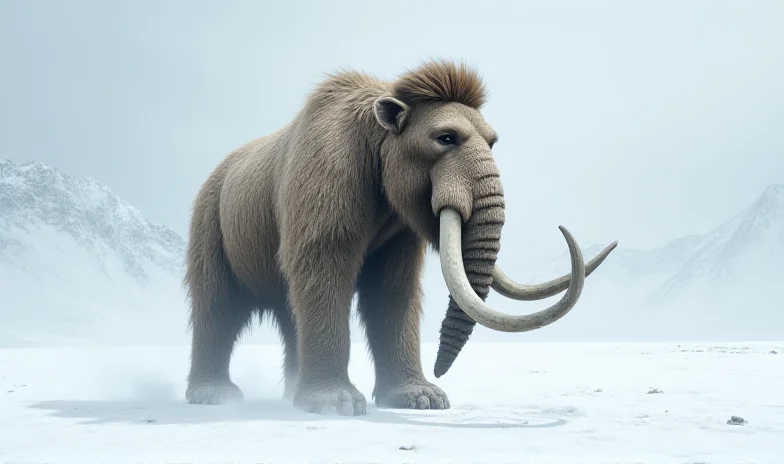Science is a field of constant progress, with breakthroughs happening every day. Today, we're looking at a few exciting developments, from the potential revival of a prehistoric giant to the challenges posed by severe weather in the United States.
Bringing Back the Mammoth: One Mouse at a Time
The idea of bringing extinct animals back to life has long captured the imagination. Now, American scientists are taking concrete steps toward making this a reality, starting with the woolly mammoth. Researchers have achieved a significant milestone by successfully introducing multiple mutations in mice, creating what some are calling a "hairy mouse."

While creating a mouse with mammoth-like traits is a far cry from reviving the actual mammoth, it represents a crucial first step. As one researcher noted, the process of creating a true mammoth is significantly more challenging, but this success demonstrates that "we are on the right track." The research focuses on specific genetic traits that made the mammoth adapted to the cold, such as thick fur and a layer of fat.
Severe Storms Threaten the US South
Meanwhile, the southern United States is bracing for a different kind of challenge: severe thunderstorms. Meteorologists are warning of a line of powerful storms sweeping through Arkansas, Louisiana, Mississippi, and Alabama.
These storms are expected to bring a variety of hazards, including tornadoes, damaging winds, flash flooding, and even blizzards in some areas. Residents are urged to stay informed and take necessary precautions to protect themselves and their property. "The main threats are strong destructive gales, tornadoes and at least some areas of large hail," warns one meteorologist.

Other Science News: GMO Corn and Spinal Muscular Atrophy
Beyond mammoths and storms, other significant scientific developments are also making headlines. A study published in *Science* highlights the growing problem of pest resistance to Bt corn, a genetically modified crop designed to be insecticidal. The study found that the overuse of Bt corn in American agriculture has led to rapid adaptation in the targeted beetle, potentially rendering the technology obsolete.
In more positive news, an American infant with spinal muscular atrophy, a rare neuromuscular genetic disease, received groundbreaking treatment *in utero*. The infant's mother was administered risdiplam during pregnancy, marking a significant advancement in the treatment of this debilitating condition. The now two-and-a-half-year-old girl is doing well, offering hope for other families facing similar diagnoses.

These diverse stories highlight the breadth and impact of scientific research, from potentially resurrecting extinct species to addressing urgent challenges like severe weather and genetic diseases. Science continues to shape our world in profound ways.
As we continue to advance in science, it is important to consider the ethical and environmental implications of our discoveries. The revival of extinct species, the widespread use of GMOs, and the development of new medical treatments all require careful consideration and responsible implementation.
